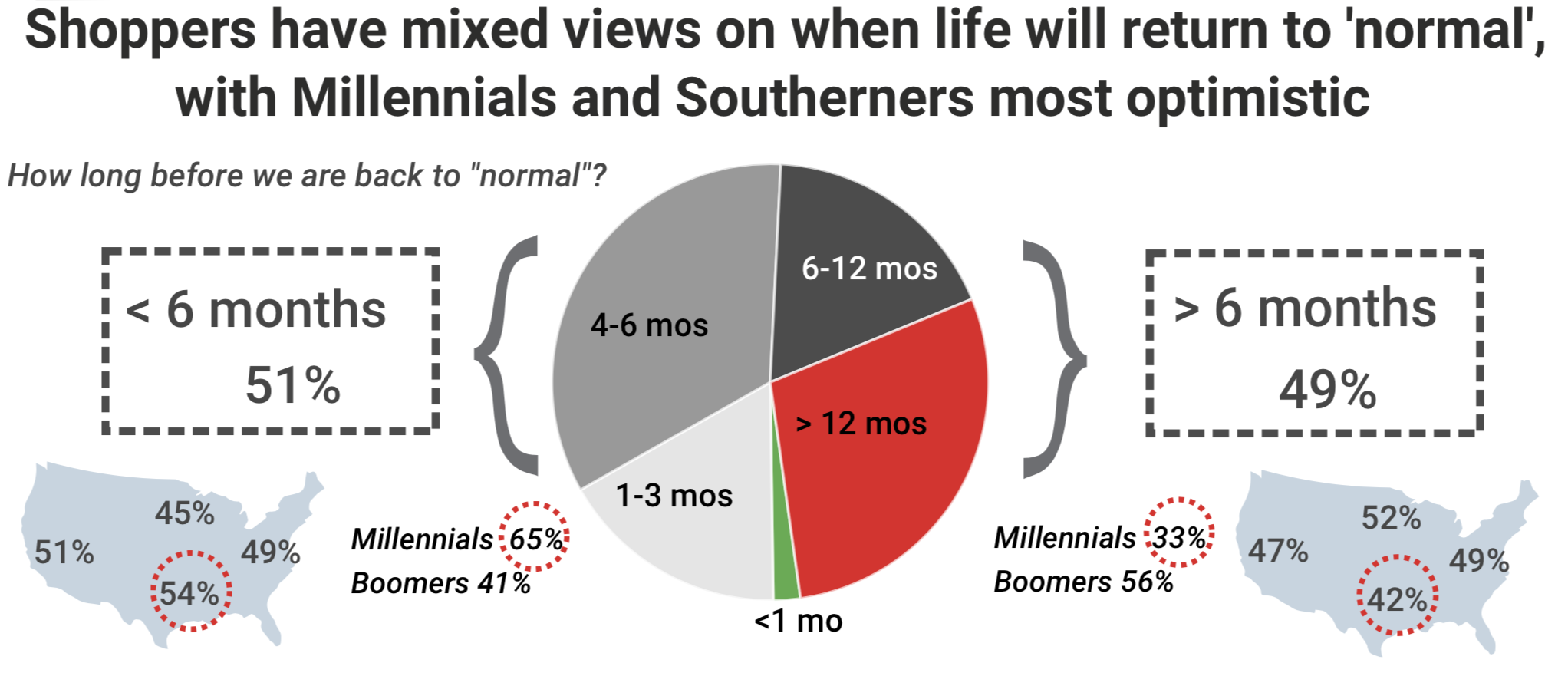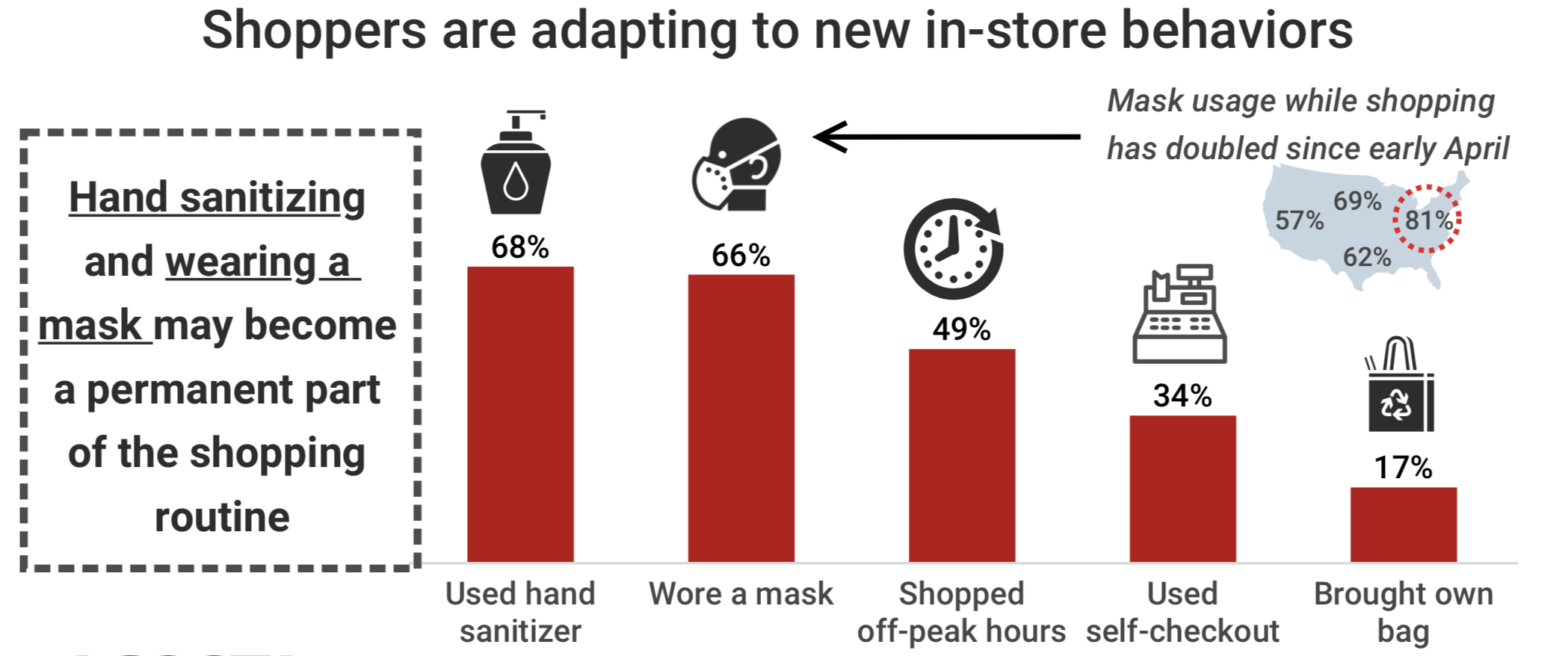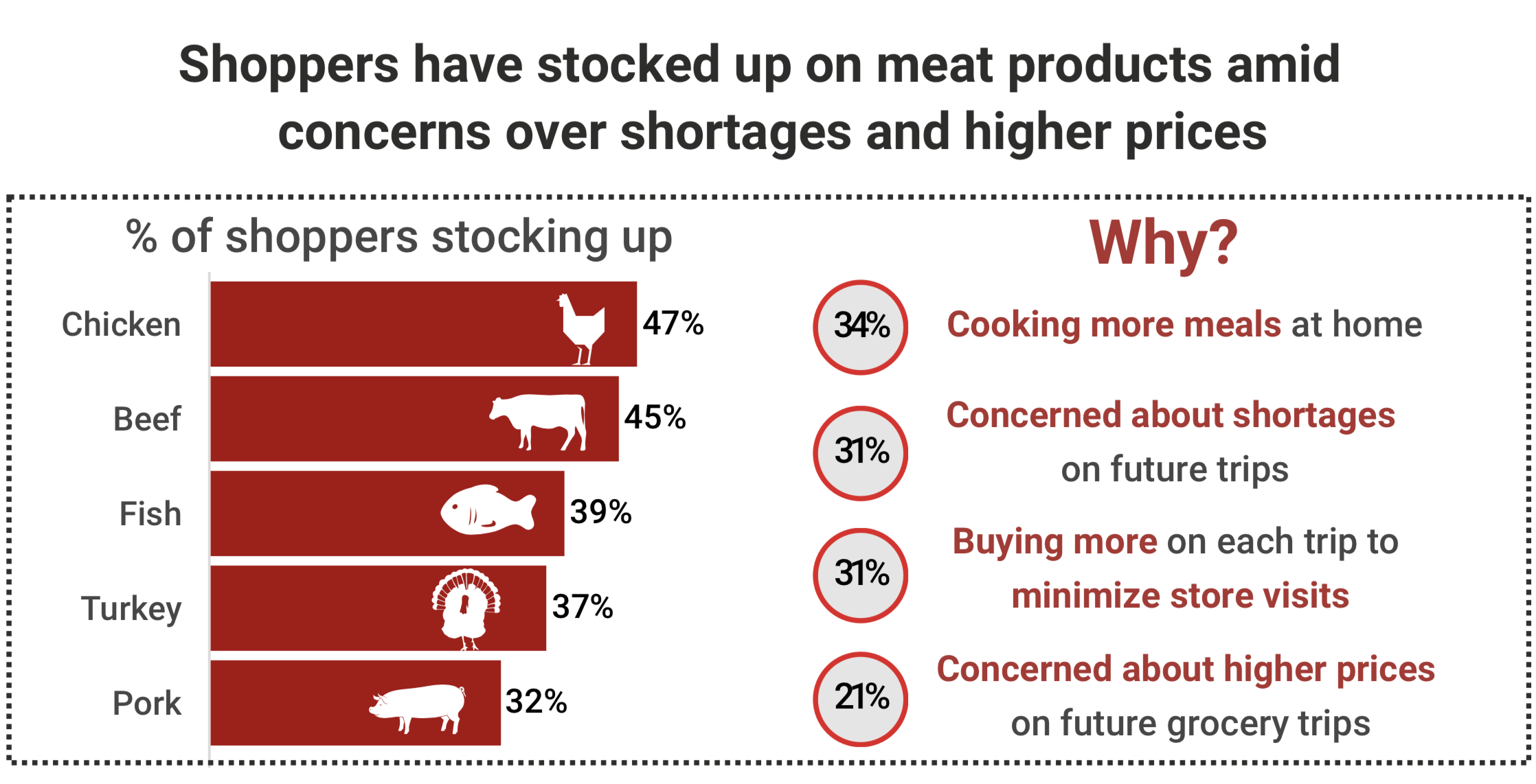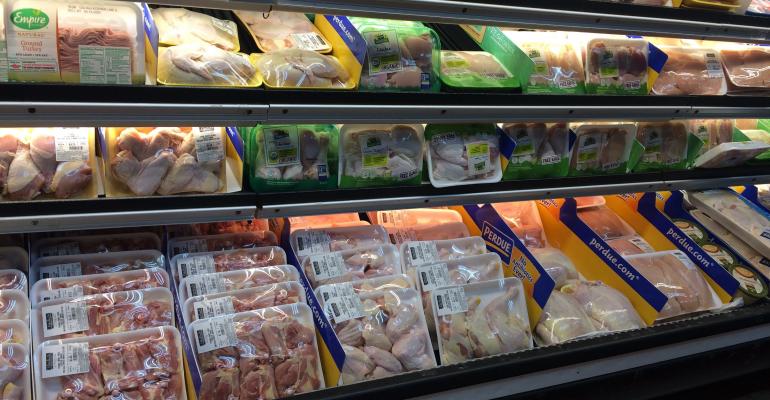As U.S. states and counties begin to reopen for business after the height of the coronavirus outbreak, half of shoppers (51%) surveyed by research firm Acosta expect life to return to normal in less than six months, while more than a quarter (29%) believe it will take more than a year to return to pre-coronavirus behavior and daily life.
Acosta, a sales and marketing agency in the consumer packaged goods industry, on Thursday released its research providing insight into the continuing evolution of consumer behavior and outlook amid the COVID-19 pandemic.
“Three months into the pandemic, consumers are not surprisingly seeking the light at the end of the tunnel, but not all are optimistic about, or supportive of, a quick return to normalcy due to continuing health concerns,” said Darian Pickett, CEO of Acosta. “With shoppers settling into their new routines, ‘normal’ life will not look like pre-COVID-19 life, at least not entirely. Our research shows that bringing reusable bags to stores may become a thing of the past and using hand sanitizer and masks while shopping is likely to remain common practice even after the pandemic subsides.”
Acosta’s research report was gathered via online surveys and conducted between May 3 and May 5.

When asked if they believed life would be back to normal within six months or beyond six months, the responses were split 51% to 49%. Millennials (65%) and Southerners (54%) are the most optimistic about life returning to normal in less than six months.

Shoppers have differing opinions on state reopening plans. Forty-three percent believe their state is reopening on a reasonable schedule; 39% believe their state is reopening too soon; and 13% don’t think their state is reopening fast enough.

When it comes to grocery shopping, it appears that many of the new in-store behaviors being put in place are becoming routine to shoppers. Sixty-eight percent of shoppers reported using hand sanitizer before or after shopping. Sixty-six percent of shoppers reported wearing a mask while shopping. Mask usage has doubled since early April and is most popular among shoppers in the Northeast — where 81% of shoppers report wearing a mask in stores. In addition, nearly half of shoppers (49%) reported shopping during off-peak hours to avoid crowds and a third of shoppers (34%) opted to use self-checkout.

One part of the shopping experience that customers have concerns about is the meat department, in the face of recent meatpacking plant closures due to COVID-19. According to Acosta, shoppers are stocking up on meat products because they are cooking more meals at home (34%), concerned about shortages (31%), minimizing their number of store trips (31%) and concerned about higher prices on future trips (21%). Chicken was the most popular protein choice with 47% of shoppers stocking up on it, and beef (45%) and fish (39%) round out the top three.
Fifty-three percent of shoppers noticed purchase limits when buying meat; 46% noticed out-of-stocks; and 35% noticed higher prices.
For our most up-to-date coverage, visit the coronavirus homepage.





